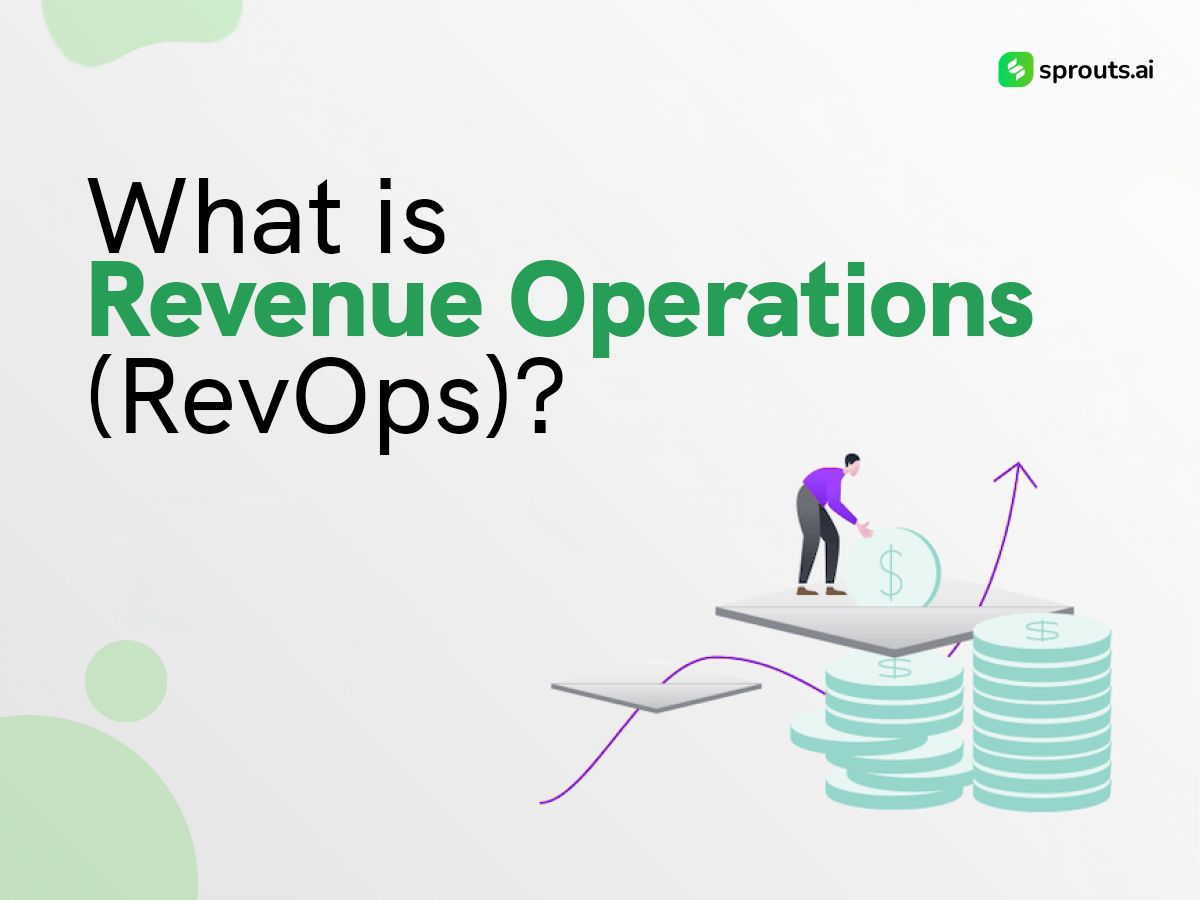Are you constantly hearing the term “RevOps” but remain uncertain about its meaning? Are you intrigued by the potential benefits that revenue operations could bring to your business? Is this the first time you’ve encountered this term, yet you’re eager not to miss out on the buzz?
Revenue operations, or RevOps for short, is the process companies employ to align their marketing, sales, and service strategies to generate higher profits. This encompasses various activities, such as implementing new processes to enhance accountability and collaboration and refining reporting and analytics to yield more accurate data.
Read on to explore its specifics and gain insight into its key pillars and other crucial components.
The Holistic Approach of RevOps
RevOps is not just a department; it’s a philosophy that transcends traditional organizational structures. It revolves around the collaboration of marketing, sales, and customer success, fostering communication and integration to create a unified force focused on revenue generation.
Three Pillars of RevOps:
a. People: At the heart of RevOps are the people driving marketing, sales, and customer success teams. Collaboration becomes the cornerstone, breaking departmental barriers and creating a unified front for a seamless customer experience. Successful RevOps implementation hinges on fostering a culture of shared responsibility. Team members from different departments must recognize the interconnectedness of their roles in the revenue generation process. This requires not only effective communication but also a mindset shift towards collective goals rather than departmental silos.
Additionally, cross-functional training and knowledge-sharing programs can be instrumental in equipping team members with a broader understanding of the entire customer journey. When individuals grasp how their efforts contribute to the overall revenue strategy, it enhances collaboration and empowers them to make more informed decisions.
b. Processes: Streamlining processes is fundamental to RevOps. Every step in the revenue generation journey, from lead generation to customer retention, is scrutinized and optimized, ensuring a smooth, efficient, and consistent experience.
The key to successful RevOps processes lies in their adaptability. Traditional, rigid workflows are replaced with dynamic processes that can evolve in response to market changes and customer behavior. Continuous analysis and optimization of these processes are essential to identify bottlenecks, inefficiencies, and areas for improvement. Implementing automation tools is another critical aspect of optimizing processes within the RevOps framework. Automation increases efficiency and reduces the likelihood of errors, allowing teams to focus on high-value tasks that require a human touch.
Fostering a culture of continuous improvement is crucial. Regular reviews and feedback loops ensure that processes remain aligned with organizational goals and responsive to the ever-shifting business landscape.
c. Technology: Technology forms the backbone of RevOps. Advanced tools and platforms are leveraged to gather, analyze, and interpret data, providing a comprehensive view of the customer lifecycle and enabling data-driven strategies.
Integration is vital when it comes to RevOps technology. Siloed systems hinder collaboration and impede the flow of crucial information between departments. Implementing a unified technology stack that seamlessly connects marketing, sales, and customer success platforms is essential for achieving the desired synergy.
Data accessibility and transparency are also critical components of RevOps technology. All relevant teams should have real-time access to customer data, allowing for a more personalized and responsive approach. Leveraging artificial intelligence and machine learning capabilities can provide valuable insights, helping organizations stay ahead of market trends and customer expectations.
Revolutionizing Business Dynamics: From Unified Collaboration to Future Innovations in RevOps
Here are the details on how RevOps challenges traditional silos, fosters customer-centricity, and leverages data-driven agility. Discover insights into leadership catalysts, overcoming adoption hurdles, scalability considerations, and the future trends shaping Revenue Operations
- Breaking Down Silos for a Unified Front: RevOps challenges the traditional compartmentalization of business functions, breaking down silos to promote cross-functional collaboration. This results in a cohesive unit working towards a common goal—revenue generation—creating a more customer-centric approach.
- RevOps: Beyond Numbers to Customer-Centricity: RevOps is not merely about increasing sales numbers; it’s a paradigm shift towards creating a superior customer experience. Aligning marketing, sales, and customer success ensures a seamless journey, building customer loyalty and advocates for your brand.
- Data-Driven Agility: In the era of information, data is a powerful ally. RevOps relies on data analytics for decision-making, allowing organizations to identify trends, optimize strategies, and predict market shifts. This analytical approach empowers businesses to stay agile and responsive.
- Leadership in RevOps: A Catalyst for Success: Effective RevOps implementation demands strong leadership that champions a culture of collaboration and data-driven decision-making. Leaders must prioritize communication, tear down departmental barriers, and instill a sense of shared responsibility for revenue goals.
- Overcoming RevOps Adoption Challenges: Despite its potential, RevOps adoption comes with challenges. Address stumbling blocks like resistance to change, technology integration hurdles, and the need for ongoing training. Understanding and overcoming these challenges is crucial for a smooth RevOps transition.
- RevOps and Scalability: Scalability is a critical consideration for growing businesses. RevOps provides a flexible framework that adapts to organizational growth, ensuring alignment between marketing, sales, and customer success even as the company expands.
- The Future of Revenue Operations: As businesses evolve and market dynamics shift, RevOps will undergo further refinement. Explore emerging trends and technologies shaping the future of revenue operations, from AI-driven analytics to innovative customer engagement strategies.
When RevOps is executed effectively, companies operate efficiently and with minimal waste, paving the way for faster growth and increased revenue. This optimization is achievable at every stage of the customer journey. RevOps demands a continuous time investment; therefore, your employees should meet regularly to review successes and regroup over any shortcomings. This practice will enable you to ensure alignment while identifying and addressing any roadblocks that may arise. We hope that this blog has assisted you in gaining a better understanding of RevOps and instilled the confidence to initiate your RevOps strategy today.

